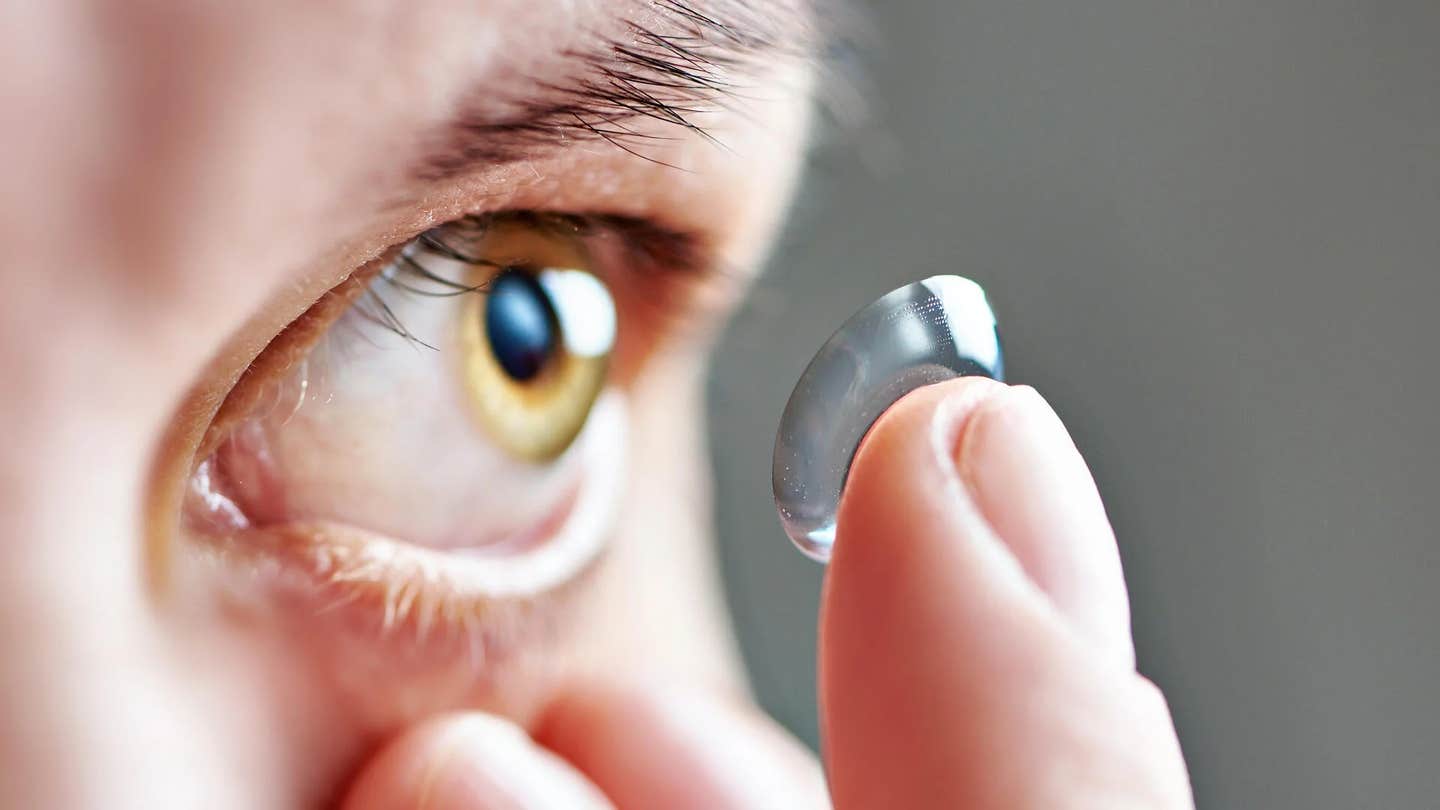Scientists revolutionize eye-tracking technology with smart contact lenses
These devices, due to their lightweight and skin-like properties, enable seamless interaction between smart devices and the human body.

Recent advances in wearable flexible devices have revolutionized human-machine interaction (HMI). These devices, due to their lightweight and skin-like properties, enable seamless interaction between smart devices and the human body. Functions such as haptic sensing, speech recognition, gesture recognition, and motion capture are now possible.
Given that vision accounts for 83% of the information humans use to perceive the world, eye-tracking technology is becoming a critical component in HMI. By analyzing eye movements, eye-tracking can detect user intentions and cognition, enabling natural and efficient interactions.
Traditional eye-tracking devices typically rely on the pupil center corneal reflection technique, which uses near-infrared light. However, this method is limited by environmental light interference, awkward camera positioning, and obstruction by the user’s eyelids and eyelashes, leading to poor performance in daily scenarios.
Electrooculography (EOG) is another method that uses skin electrodes to collect potential signals from the eye but is prone to interference from muscle electrical signals and has low accuracy. There is an urgent need for a wearable, imperceptible eye-tracking device to advance eye-tracking technology in various fields, including medical diagnostics, cognitive science, and driver fatigue detection.
Innovative Smart Contact Lenses
Benefiting from the progress in flexible optoelectronic technology, researchers at the College of Engineering and Applied Sciences at Nanjing University have developed miniaturized, intelligent contact lenses. These smart contact lenses (SCLs) can project images directly onto the retina, monitor physiological changes in real-time, and integrate various medical treatments.
Traditional scleral coil-based eye-tracking technology, known for its high resolution and fast response time, is considered the gold standard but is limited by its wired nature and bulky equipment.
Related Stories
In this context, a new miniature, imperceptible, and wireless eye-tracking SCL has been proposed. Using frequency encoding and advanced spherical conformal preparation techniques, this SCL consists of four chip-less passive RF tags with different working frequencies.
A portable sweeping-frequency reader, installed in framed glasses opposite the user’s eyeball, wirelessly collects the tags’ signals. The changing received signal strengths of the tags, due to varying coupling coefficients caused by eye movement, are used to track the gazing point and input eye commands.
Design and Characterization
The proposed SCL demonstrates several key features:
High Angular Accuracy: The eye-tracking SCL achieves an angular accuracy of less than 0.5°, which is even smaller than the central fovea’s vision range.
Multiple Interaction Modes: The SCL supports various interaction modes, such as continuous eye-painting, eye-controlled games, web interaction, PTZ camera control, and robot vehicle driving.
Excellent Biocompatibility: Comprehensive tests show that the SCL has low cytotoxicity and low eye irritation.
The SCL’s design incorporates four RF tags integrated into the lens's periphery. These tags provide backscattering signals for eye motion detection. Encapsulated in a silicone elastomer, the SCL maintains high oxygen permeability and biocompatibility. Additionally, the SCL includes a commercial contact lens layer for added safety.
The eye-tracking system consists of the SCL and a portable sweeping-frequency reader that detects the tags’ signals wirelessly. The reader uses a vector network analyzer (VNA) to collect data. The rotation of the human eyeball, divided into pitch and yaw directions, alters the coupling coefficients of the tags, changing the signal strength and enabling the detection of eye movement.
A time-sequential eye-tracking algorithm based on an implicit swirling calibration method has been developed. This algorithm provides high precision for eye calligraphy and painting on a virtual screen. The calibration process involves the user staring at a swirling pattern on a screen, with the SCL recording the signals at each point. The response model is then constructed using this data, allowing for accurate real-time tracking of the gazing point.
Using this algorithm, various applications have been demonstrated:
Eye-Drawing: Users can draw letters and patterns on a virtual screen with high accuracy.
Gluttonous Snake Game: The classic game is controlled by eye movements, with the snake’s direction changing based on eye commands.
Web Interaction: Users can switch web pages, scroll, and take screenshots using eye commands.
PTZ Camera Control: Eye movements can control the pan and tilt of a PTZ camera, enabling precise control of the camera’s view.
The functionality and safety of the eye-tracking SCL were tested in vivo using rabbits. The SCL successfully captured the eye movements of a rabbit to control a robot vehicle wirelessly. Comprehensive biocompatibility tests, including 24-hour and week-long wear studies, showed no signs of corneal injury, erosion, inflammation, or edema. These results indicate that the SCL is as safe as commercial contact lenses.
The proposed frequency-encoded SCL represents a significant advancement in wearable eye-tracking technology. It offers high accuracy, robustness to environmental interference, and excellent biocompatibility. The SCL enables natural and efficient eye-machine interactions, making it a promising tool for various applications, from gaming and web interaction to medical diagnostics and driver fatigue detection.
Future improvements could include enhancing the SCL’s flexibility and transparency, optimizing the structure of the smart device, and developing specialized eye-tracking systems for specific applications. Collaborative optimization of the SCL, reader, and tracking algorithm could also simplify the calibration process, potentially achieving calibration-free eye tracking and improving accessibility. The innovative wearable eye tracker enriches the approaches to eye-tracking techniques and has the potential to revolutionize human-machine interaction.
The new study published in Nature Communications aims to overcome the challenges posed by traditional eye-tracking methods.
For more science news stories check out our New Innovations section at The Brighter Side of News.
Note: Materials provided above by The Brighter Side of News. Content may be edited for style and length.
Like these kind of feel good stories? Get the Brighter Side of News' newsletter.
Joshua Shavit
Science & Technology Writer | AI and Robotics Reporter
Joshua Shavit is a Los Angeles-based science and technology writer with a passion for exploring the breakthroughs shaping the future. As a contributor to The Brighter Side of News, he focuses on positive and transformative advancements in AI, technology, physics, engineering, robotics and space science. Joshua is currently working towards a Bachelor of Science in Business Administration at the University of California, Berkeley. He combines his academic background with a talent for storytelling, making complex scientific discoveries engaging and accessible. His work highlights the innovators behind the ideas, bringing readers closer to the people driving progress.



